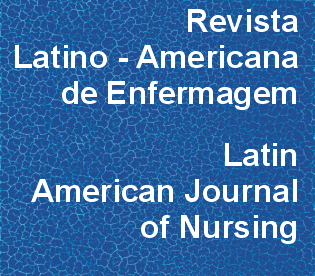Contamination risks caused by occupational accidents with cutting and piercing material among nursing workers
DOI:
https://doi.org/10.1590/S0104-11692004000100006Keywords:
accidents, occupational, occupational risks, nursingAbstract
This study aimed to identify, among nursing workers from four hospitals in the region of Ribeirão Preto-SP, Brazil, victims of occupational accidents with cutting and piercing material, who were sent for evaluation at a service specialized in treating infectious diseases, individuals who were contaminated and the conduct adopted as a result of the accidents. This is a descriptive field research. The sample consisted of 30 subjects and data were collected by consulting the workers' medical files. The results showed that none of the workers had been contaminated by HBV, HCV or HIV. However, it was observed that only 23.33% of them had kept all the scheduled appointments in order to verify a possible serum conversion. Concerning the conducts adopted as a result of the accident, the use of chemoprophylaxis was recommended in 76.67% of the cases, serological tests in 100% and immunization against Hepatitis in 9.99%. Due to the high occurrence of percutaneous accidents, according to official estimates from other countries, it was concluded that more attention must be given to the prevention of these accidents, as well as to the strict follow-up of workers after occupational exposure.Downloads
Download data is not yet available.
Downloads
Published
2004-02-01
Issue
Section
Original Articles
License
RLAE’s authorship concept is based on the substantial contribution by each of the individuals listed as authors, mainly in terms of conceiving and planning the research project, collecting or analyzing and interpreting data, writing and critical review. Indication of authors’ names under the article title is limited to six. If more, authors are listed on the online submission form under Acknowledgements. The possibility of including more than six authors will only be examined on multicenter studies, considering the explanations presented by the authors.Including names of authors whose contribution does not fit into the above criteria cannot be justified. Those names can be included in the Acknowledgements section.
Authors are fully responsible for the concepts disseminated in their manuscripts, which do not necessarily reflect the editors’ and editorial board’s opinion.
How to Cite
Contamination risks caused by occupational accidents with cutting and piercing material among nursing workers. (2004). Revista Latino-Americana De Enfermagem, 12(1), 36-42. https://doi.org/10.1590/S0104-11692004000100006



